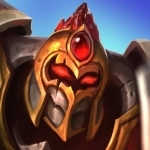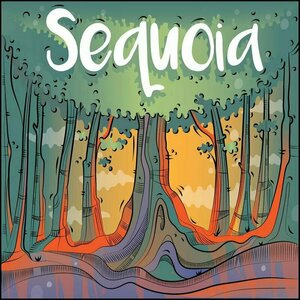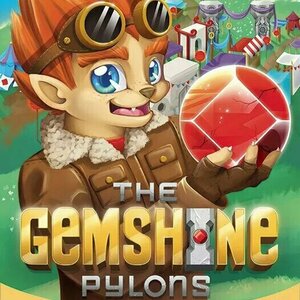
Yarr Harr!
Tabletop Game
Yarr-Harr! is a light strategy, easy to learn, fast-paced ship-building card game that is fun for...
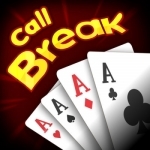
Call-Break Multiplayer
Games and Entertainment
App
Call Break Multiplayer is a Live, Online, Multiplayer FREE gaming app from Artoon Solutions Pvt....
Purple Phoenix Games (2266 KP) rated Sequoia in Tabletop Games
Mar 17, 2021
Sequoia is a game of dice rolling and area majority in which players are trying to grow the largest trees across different forests. To setup the game, lay out the 11 forest cards on the table within reach of all players, and randomly assign a 1st and 2nd place token to each card. Each player receives 5 dice and 20 tree tokens in their chosen color. The game is ready to begin!
On each turn, players will simultaneously roll their 5 dice – keeping the results secret from all other players! After rolling, players will create 2 pairs using 4 of their dice (one will be left out). Everyone reveals their pairs at the same time, and will place a tree token on the card that matches each of their dice pairs. For example, my pairs might be a 5 and a 2, and a 6 and a 6, so I would put a tree token on the 7 and 12 forest cards. Play continues in this manner (rolling dice, creating pairs, and placing tree tokens), until players have placed all of their tokens. Once all tokens have been placed, the game moves to the scoring phase. For each forest card, the 1st and 2nd place tokens go to the players who have the most and 2nd most tree tokens on the forest card. Once all cards have been scored, count up final points, and the player with the most points wins!
I have to start off by saying that Sequoia really surprised me. I was expecting a fast, light game, and that’s what I got. But I also got a game with a fun amount of player interaction and strategy that keeps all players engaged. You may not know what forest cards a player will choose each turn, but you can see who has already played tree tokens to each card, which can help drive your strategy. Do you want to directly compete with everyone and really pile on the tokens to win 1st place on a card? Or do you want to spread your tokens around to as many forest cards as possible, and hopefully maximize points that are otherwise being ignored by opponents? Especially since the 1st and 2nd place tokens are randomly assigned and have differing values, you really don’t know which forests will yield the highest points until the end of the game. Sequoia is a Yahtzee-esque game that allows direct player interaction, and that elevates the overall gameplay for me.
Let’s talk about components for a minute. These components are great. The forest cards are a nice thick card stock. The tree tokens and 1st/2nd place tokens are all good chunky bits that will definitely hold up over time. And the dice are nice little d6’s that are easy to read and fun to manipulate. The color matching with the dice and tree tokens is also really nice, and I appreciate that uniformity for each player color. All in all, a high quality production for such a small game.
If you ask me, I think Sequoia is a perfect filler game. It is super fast to teach and play, the setup/cleanup takes literally seconds, and it provides an engaging and fun gameplay. Beyond being a filler game, it is a great small standalone game as well. Want something fast to play while the oven is pre-heating for dinner? Pull out Sequoia! I also love that it is simple enough for younger players to understand – it is a numbers game, but you can also visually see what your opponents are working towards, and that lends itself to a good amount of player interaction. Definitely a game that I can see getting a decent amount of table time in my group! Purple Phoenix Games gives this one a sky-rocketing 8 / 12. Check it out, you might be surprised!
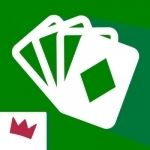
Solitaire Collection - Game
Games and Entertainment
App
Enjoy the most popular solitaire card games in one single app: Klondike and Pyramid! Discover the...
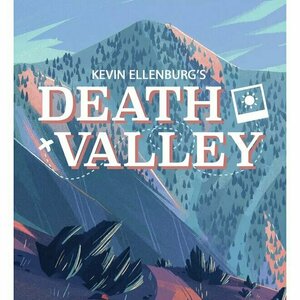
Death Valley
Tabletop Game
Sunlight glaring through the windshield. Your favorite songs blasting through the speakers. Candy...
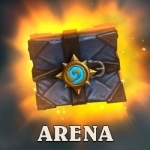
Arena Guide for Hearthstone: Heroes of Warcraft
Reference and Entertainment
App
*The Grand Tournament Update *Arena Strategies *Deck building *How to select Hero *Arena Card Ranks...

Pocket Pixel Artist
Tabletop Game
Welcome to Retro Game Jam. The annual pixel platformer design competition. Do you and your team have...

Solitaire City Classic
Games and Entertainment
App
No ads or In-App purchases! Play Klondike solitaire, the world's most popular solitaire/patience...
Purple Phoenix Games (2266 KP) rated The GemShine Pylons in Tabletop Games
Mar 17, 2021
Disclaimer: We were provided with a prototype copy of this game for the purposes of this preview. This is not a production copy of the game. The game also came with rules for solo play and cooperative play, but this preview will be covering the base rules of competitive play. I will be providing a general overview of the gameplay, and will not be rehashing the entire rulebook in this preview! -L
The GemShine Pylons is an economic game of hand management in which players are trying to build, power, and decorate Pylons in an effort to earn the most end-game points. To setup the game, shuffle the deck of Pylon cards, deal 1 face-down to each player as their starting Pylon, and deal 5 face-up next to the deck to serve as the market. Place the Timing Card at the bottom of the Pylon deck, with the appropriate player-count side face-up. Place the Setup card at the end of the market line, and place a random gem from the bag onto the empty gem slot. Above the market line, create 4 piles of Decoration cards, based on the number of Representatives on each card. Each player receives 4 random gems to their personal supply, a starting player is selected, and the game is ready to begin! The setup should look similar to the picture below.
The GemShine Pylons is played over a series of rounds in which players take turns performing actions. On your turn, you will perform one of three actions: Purchase a Card, Gather Gems, or Build a Pylon. To Purchase a Card, you will select a card from the market and pay its cost. There are 3 different costs for purchasing cards – leave 1 gem, leave 2 gems, or discard 1 Pylon. To leave 1 or 2 gems, you will select a gem (or 2) from your personal supply and place it in the spot emptied by the card you have purchased. When you discard a Pylon, you will take a Pylon from your tableau and discard it in order to purchase said card. Once a card has been purchased, you resolve the effect shown. These effects could be: gaining gems, placing gems onto Pylons/Decorations, gaining Pylons, or ‘purchasing’ Decorations. You may choose to not perform any/all effects on a card. Certain market cards have a number/color of Representatives on the bottom, and those are used to purchase Decorations. Every Decoration has a Representative cost, and you must discard cards from your hand with the matching color Representatives equal to the Representative cost. After performing the action on the card, it now goes into your hand.
To Gather Gems, you will take all the gems that are present in the market line, including the gem on the Setup card. These gems go directly into your personal supply. Any cards that were left in the market line are discarded, and the market is filled with 5 new cards from the Pylon deck. Select a random gem to be placed on the Setup card. To Build a Pylon, you will select a card from your hand and place it face-down in your tableau – it is now a Pylon. Play continues in this fashion, alternating turns, until the Pylon deck is depleted and the Timing Card is revealed. The game ends at the end of the current round. Points are now tallied – from Decorations and gems in slots. Players count up their points from any Decoration cards in their tableau. All players then reveal the cards in their hands, and the total number of Representatives for each color – blue, red, and white – are counted. The color that has the highest number of Representatives across all players combined is worth 4 points, the next highest is worth 2 points, and the lowest is worth 1 point. Players will then go through their gems in slots, counting up points based on the color majorities. Only gems in slots earn end-game points – any gems in your personal supply are not counted. Add up gem points and Decoration points, and the player with the highest score wins!
I know that may seem like a lot, but I do have to say that once you get going, the gameplay is pretty streamlined and straightforward. You only have 3 main action options each turn. If you purchase a card from the market, there are essentially 4 different effect options on each card. That being said, the small number of actions/effects do not stop the gameplay from being strategic. Most cards in the market require you to pay 1 or 2 gems, leaving them in the market line and available for your opponents to collect. How badly do you need that effect, and which color gem do you give up? Maybe the available cards only have blue Representatives but you only need 1 more red Representative to claim a Decoration – should you snag that blue in hopes of using it later in the game? Or do you go for a card that allows you to place gems, thus powering your Pylons and earning you points at the end of the game. But if you wait too long, your opponent may just buy the Decoration you were saving towards – seems to happen to me every time! It is also important to note that when you buy a Decoration, it can only be attached to a gem-powered Pylon. So you’ve got to balance having enough gems to power your Pylons, as well as having enough gems to purchase cards from the market. AND the different colored gems will earn varying amounts of points at the end of the game – do you want to risk going all in on red gems in hopes of scoring big, or should you try to collect gem colors evenly and spread those points around. There’s no single right way to play, and your strategy must be evolving constantly as the market line and available Decorations change throughout play.
Let me touch on components for a moment. Although we received a prototype copy of the game, the artwork is finalized and ready for production. The art style is relatively simple, yet nice to look at and thematically appropriate. I want to applaud the iconography on the cards as well, as it is very straight-forward and easy to understand. The cards have no text on them at all, but the consistency of the icons and simplicity of their explanations make them very easy to comprehend. The gems themselves are chunky and fun to play with, and make the game feel a little more immersive!
Overall, I really like The GemShine Pylons. The gameplay is straightforward, relatively simple, yet requires a decent amount of strategy. Every game feels exciting and unique, as everyone really is at the mercy of the deck shuffle. The artwork is thematic, the iconography is simple and clear, and the gameplay feels fresh. Even though this is only a prototype copy of the game, I am excited to have it in my collection, and am already thinking about my strategy for my next play. I am eager to try out the solo and cooperative modes as well, but the competitive rules themselves are engaging and entertaining. If you’re looking forward to a strategic, yet quick game, give The GemShine Pylons a try. I look forward to following this Kickstarter campaign and seeing what other goodies Game Elemental has in store!
